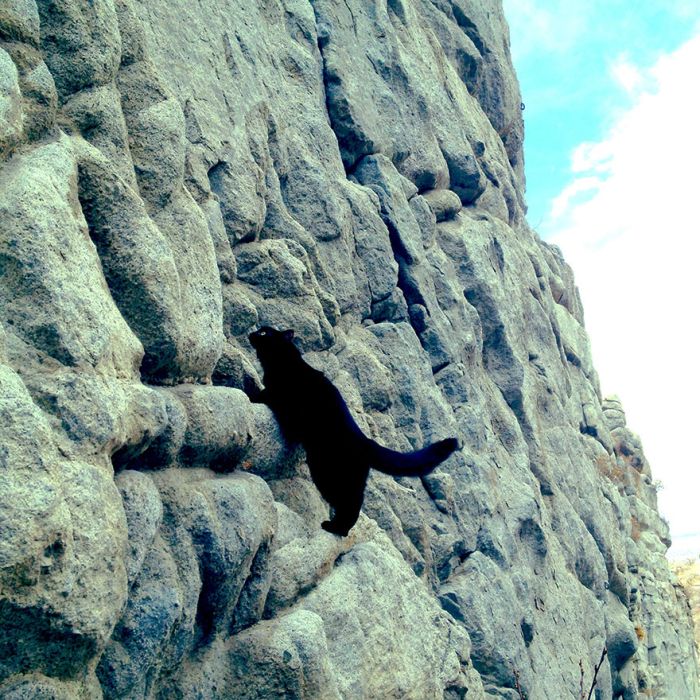|
|
Cat Climbs Mountains And Desert Treks
|
Cats have excellent hearing and can detect an extremely broad range of frequencies. They can hear higher-pitched sounds than either dogs or humans, detecting frequencies from 55 Hz up to 79 kHz, a range of 10.5 octaves; while humans can only hear from 31 Hz up to 18 kHz, and dogs hear from 67 Hz to 44 kHz, which are both ranges of about 9 octaves. Cats do not use this ability to hear ultrasound for communication but it is probably important in hunting, since many species of rodents make ultrasonic calls. Cats' hearing is also extremely sensitive and is among the best of any mammal, being most acute in the range of 500 Hz to 32 kHz. This sensitivity is further enhanced by the cat's large movable outer ears (their pinnae), which both amplify sounds and help a cat sense the direction from which a noise is coming.
Cats have an acute sense of smell, which is due in part to their well-developed olfactory bulb and also to a large surface of olfactory mucosa, in cats this mucosa is about 5.8 cm2 in area, which is about twice that of humans and only 1.7-fold less than the average dog. Cats are very sensitive to pheromones such as 3-mercapto-3-methylbutan-1-ol, which they use to communicate through urine spraying and marking with scent glands. Cats also respond strongly to plants such as catnip which contains nepetalactone, as they can detect this substance at less than one part per billion. This response is also produced by other plants, such as Silver Vine and valerian, and may be caused by the smell of these plants mimicking a pheromone and stimulating cats' social or sexual behaviors.
Cats have relatively few taste buds compared to humans. Owing to a mutation in an early cat ancestor, one of two genes necessary to taste sweetness may have been lost by the cat family. Their taste buds instead respond to amino acids, bitter tastes and acids. To aid with navigation and sensation, cats have dozens of movable vibrissae (whiskers) over their body, especially their face. These provide information on the width of gaps and on the location of objects in the dark, both by touching objects directly and by sensing air currents; they also trigger protective blink reflexes to protect the eyes from damage.
|
|









